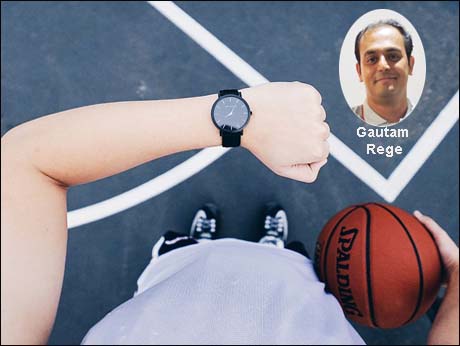
By Gautam Rege, Co-founder and Director, Josh Software.
April 15 2019: From the introduction of wireless trackers for heartbeat monitoring in 1980s to apps and websites that came up in 2005 to the introduction of FitBit, the biggest gamechanger in the wearable tech industry in 2007. Now, smart fabrics have also been introduced and smart clothing is driving the revolution ahead. The development and miniaturization of sensors has also made wearable devices possible. Smart Phones have been instrumental in helping to keep smaller and lightweight wearable gadgets that send information to the Smart Phone via Bluetooth or BLE. Cloud based AI tools managing large amounts of data have made it possible to not just monitor but also analyze, predict and give recommendations to lead a healthier life.
Real-time track base for fitness
Keeping track of fitness in real time is better than post training analysis, especially for sportspeople. It is also readily accessible as compared to the idea sportspeople sitting in labs after their performance. Devices used to collect biometrical data can provide a rich source of information to all stakeholders. This may determine the success of sportspeople’s training. For athletes, preventing the onset of injury is always a constant battle as motivation drives them to push harder in the pursuit of better performance. However, the adoption of wearable devices may help change that as now coaches can monitor the sportsperson’s performance in real time. Creation of personalized exercise plans for athletes basis real time data monitoring will also be possible.
Use of wearable tech by sportspeople influences masses
Devices that used to be oddly shaped and clunky, worn only by competitive athletes, have morphed into stylish, everyday pieces worn by casual joggers and stroller-pushing parents who just want to track their daily steps and sleep. There is a reason wearable device have become a favorite gift for employers to give employees. Healthier employees mean lower healthcare costs. Companies that provide medical insurance benefits have started looking at employee health metrics to negotiate for lower insurance premiums! And there are now apps and devices for just about any activity, including tennis, golf, skiing, and swimming.
Wearable tech and data protection: drawing a line
Transparency presents a practical challenge in the context of wearables: user interfaces are generally small or non-existent, and nowadays it may not be reasonable to expect users to read full privacy notices provided in physical or online user manuals. To ensure compliance, wearable providers should consider the use of standardized icons, as referred to in the to inform users what is happening to their data. Many of the concerns around the use of wearables stem from uncertainties around the third parties with which personal data may be shared. Wearable technology often involves a complex network of data controllers all sharing personal data with each other and third parties.
Wearable technology in sports is a huge benefit to professional athletes, a good source of motivation for the masses to improve their health and a potential source of analysis to Insurance companies and Employee benefits. Global revenues for sports, fitness and activity monitors are expected to grow from $1.9 billion in 2013 to $2.8 billion in 2019, according to technology industry analysis firm IHS Technology. Visible wearables can attract unwanted attention. Just like all Formula-1 technology, revolving around speed, safety and efficiency slowly makes its way into cars that are driven on the roads, data from wearable technology will soon make its way into predictive analysis for the health industry on a global level.